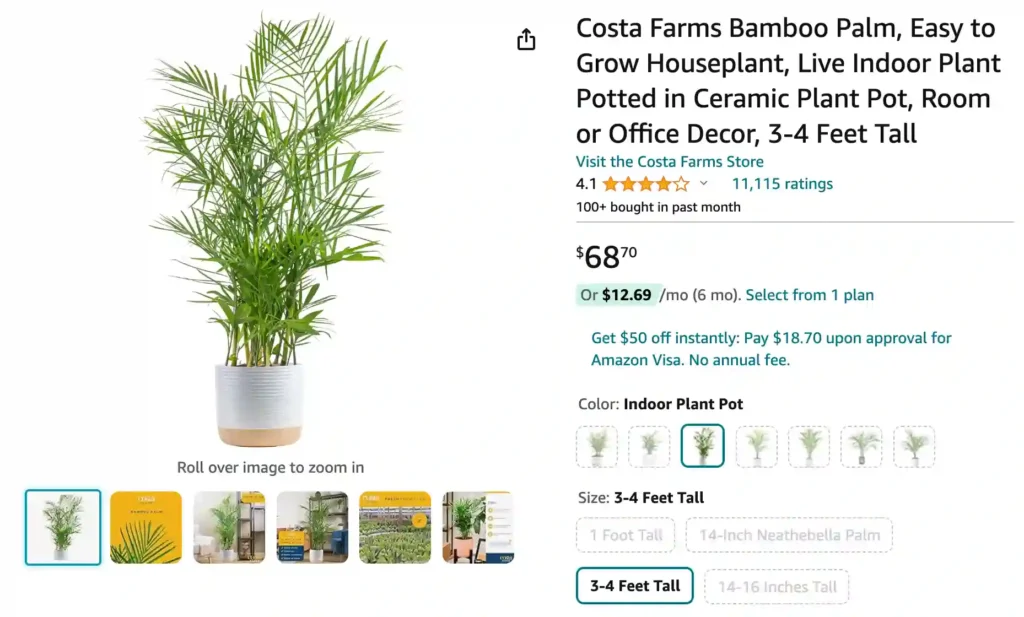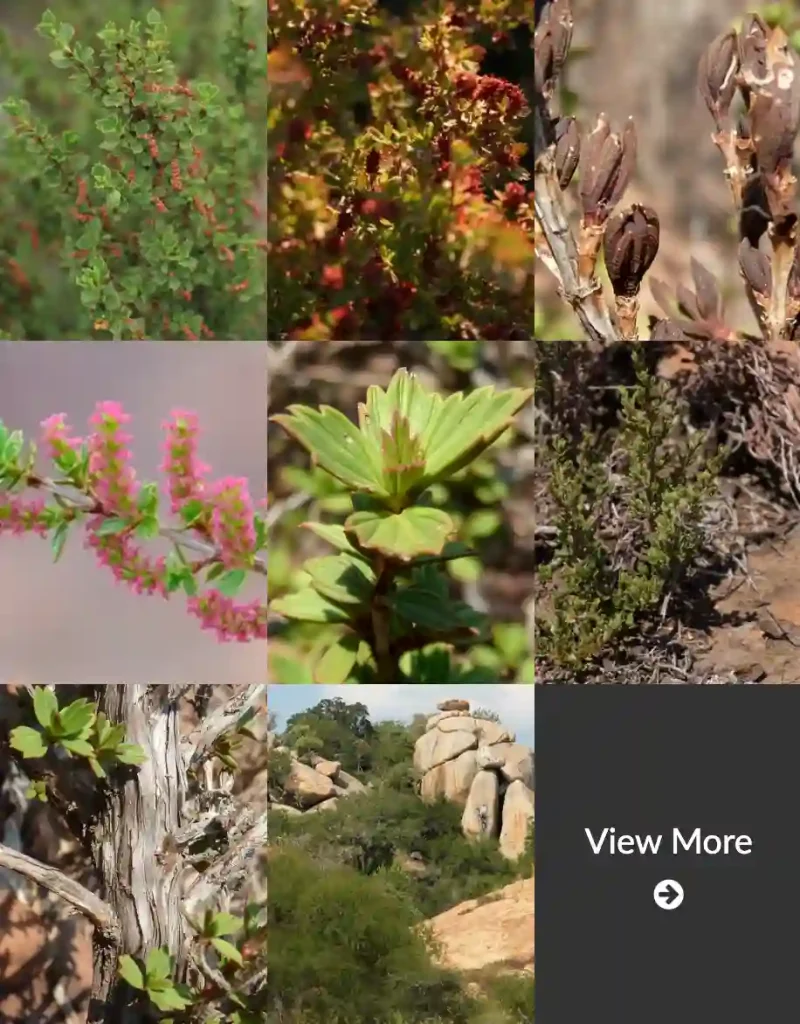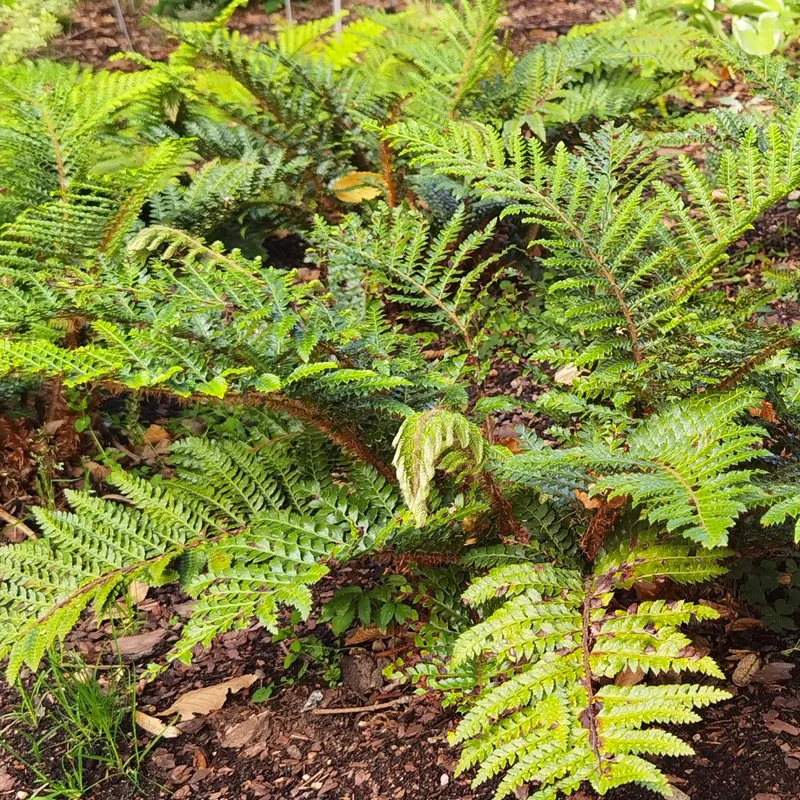
What is bamboo palm?
Bamboo palm, scientifically known as Chamaedorea Seifrizii, is a tropical plant native to Mexico and Central America. It’s a popular choice for indoor houseplants due to its attractive appearance and relatively low maintenance requirements. Bamboo palm belongs to the Arecaceae family and is also known as reed palm or parlor palm. It’s prized for its graceful foliage and ability to thrive in low-light conditions, making it ideal for brightening up indoor spaces.
106 Species in Genus Chamaedorea
Bamboo Palm vs Areca Palm
I’ve had both Bamboo Palm and Areca Palm in my living room, and I find the Bamboo Palm more suited to my space. The Bamboo Palm’s feathery fronds give a softer, more inviting feel, while the Areca Palm, though beautiful, can sometimes feel a bit too dense and overwhelming.
Bamboo Palm vs Bamboo
When I compare my Bamboo Palm to actual bamboo, the differences are stark. The Bamboo Palm has a more delicate, indoor-friendly presence, while real bamboo, which I’ve seen growing wild, is more robust and better suited to outdoor environments.
Bamboo Palm vs Cat Palm
Between my Bamboo Palm and Cat Palm, I prefer the Bamboo Palm for its ease of care. The Cat Palm requires more attention and seems more prone to pests, whereas my Bamboo Palm has been relatively low-maintenance and resilient.
Bamboo Palm vs Majesty Palm
I’ve found the Majesty Palm to be quite temperamental compared to my Bamboo Palm. The Majesty Palm needs more humidity and light, which was hard to maintain indoors, while the Bamboo Palm thrived with less fuss and adapted well to my indoor conditions.
Bamboo Palm vs Parlor Palm
The Parlor Palm, with its compact and graceful foliage, was charming but didn’t create the same lush, tropical atmosphere that my Bamboo Palm does. The Bamboo Palm filled the room with a sense of calm and nature that I love.
Bamboo Palm vs Lucky Bamboo
Lucky Bamboo and Bamboo Palm are quite different despite their names. While I enjoy the Lucky Bamboo for its minimalist and elegant look on my desk, the Bamboo Palm’s larger, bushier form brings a fuller, more natural aesthetic to my home.
Is bamboo palm toxic to cats?
Yes, I found out the hard way that bamboo palm can indeed be toxic to cats. A while back, my cat started acting strangely after she nibbled on the leaves of my bamboo palm. She became lethargic and vomited a few times. It was a scary experience, and I had to rush her to the vet. Thankfully, she recovered after some treatment, but I learned my lesson about keeping toxic plants out of her reach.
How to care for bamboo palm?
Caring for bamboo palm is relatively easy once you get the hang of it. I’ve found that they thrive in bright, indirect light and prefer well-draining soil. I try to keep the soil consistently moist but not waterlogged, as they don’t like to dry out completely. Regular fertilization during the growing season helps keep them healthy, and I prune any yellowing or dead leaves to maintain their appearance.
How often to water bamboo palm?
I’ve found that watering my bamboo palm every 1-2 weeks works well to keep it happy and healthy. I check the soil regularly to make sure it’s slightly moist but not soggy, as overwatering can lead to root rot. Adjusting the watering frequency based on the season and the plant’s specific needs has helped me maintain a thriving bamboo palm.
Are bamboo palms poisonous to dogs?
Yes, bamboo palms can be toxic to dogs if ingested. While I haven’t personally experienced this with my own dog, I’ve heard stories from other pet owners who’ve had similar experiences. It’s always important to be mindful of the plants you have in your home and make sure they’re safe for your furry friends.
Can bamboo palm grow in water?
Yes, bamboo palm can be grown in water, but it’s not its preferred method of growth. While some plants can thrive in water alone, bamboo palms generally prefer well-draining soil. However, I’ve seen people successfully grow them in water-filled containers with proper care and maintenance.
Can bamboo palm grow indoors?
Yes, bamboo palm can thrive indoors, making it a popular choice for indoor houseplants. I have several bamboo palms scattered throughout my home, and they add a beautiful touch of greenery to any room. Just make sure to place them in a location with bright, indirect light and provide them with the proper care they need to thrive indoors.
Can bamboo palm take full sun?
Bamboo palm prefers bright, indirect light and can tolerate some direct sunlight, but it may struggle if exposed to full sun for extended periods. I’ve found that placing my bamboo palm in a location with filtered sunlight or partial shade works best to prevent any sunburn or damage to the leaves.
How big do bamboo palms grow?
Bamboo palms can vary in size depending on their environment and care. On average, they typically reach heights of 4 to 12 feet indoors, but they can grow taller in their natural habitat. I’ve had some bamboo palms that remained relatively small, while others have grown quite tall over the years.
How fast do bamboo palms grow?
Bamboo palms are not known for their rapid growth, but under optimal conditions, they can grow moderately fast. In my experience, I’ve noticed that they tend to grow a few inches per year, especially during the warmer months when they’re actively growing. Regular fertilization and proper care can encourage healthy growth.
How to grow bamboo palm from cuttings?
Growing bamboo palm from cuttings can be a bit challenging but not impossible. I’ve had some success propagating new plants from stem cuttings. First, I select a healthy stem with several leaves and make a clean cut just below a node. Then, I place the cutting in a container filled with moist potting soil and keep it in a warm, humid environment. With patience and proper care, the cutting should develop roots and eventually grow into a new bamboo palm plant.
How to grow bamboo palm from seeds?
Growing bamboo palm from seeds can be a slow process, but it’s definitely possible with the right conditions. I’ve tried germinating bamboo palm seeds by soaking them in warm water for a few days to soften the seed coat. Then, I plant the seeds in a well-draining potting mix and keep them consistently moist in a warm, humid environment. It can take several weeks or even months for the seeds to germinate, but with patience and dedication, you can grow bamboo palm from seeds.
How to propagate bamboo palm?
Propagating bamboo palm can be done through division or by growing from seeds or cuttings. I’ve successfully propagated new plants by dividing mature clumps, ensuring each division has a good portion of roots attached. Additionally, as I mentioned earlier, I’ve had some success growing bamboo palm from stem cuttings or seeds, although it requires patience and proper care.
Is areca palm same as bamboo palm?
No, areca palm and bamboo palm are not the same plant, although they are often confused due to their similar appearance. Areca palm (Dypsis lutescens) is also known as the butterfly palm or golden cane palm and has thinner, more feathery leaves compared to the broader leaves of the bamboo palm (Chamaedorea seifrizii). While they both make popular indoor houseplants, they have different care requirements and growth habits.
What does a bamboo palm look like?
Bamboo palm has distinct features that make it easy to identify. It typically has slender, cane-like stems with clusters of arching, pinnate leaves at the top. The leaves are usually dark green and can grow up to several feet long, giving the plant a graceful, tropical appearance. Overall, bamboo palm has a lush and elegant look that adds a touch of greenery to any space.
Where to buy bamboo palm?
Bamboo palms are widely available at nurseries, garden centers, and online plant retailers. I’ve purchased several of mine from local nurseries and garden shops, where they often have a variety of sizes to choose from. Online retailers also offer a convenient option for purchasing bamboo palm plants, with the added benefit of being able to browse a wide selection from the comfort of home.
Why is my bamboo palm dying?
There could be several reasons why your bamboo palm is dying, ranging from improper care to environmental stressors. One common reason could be overwatering, which can lead to root rot and eventually the death of the plant. On the other hand, underwatering can cause the leaves to turn brown and crispy. Additionally, bamboo palms are sensitive to cold drafts and low humidity, so placing them in a drafty area or neglecting to provide adequate humidity can also contribute to their decline. It’s essential to assess the growing conditions, such as light, water, temperature, and humidity, to determine the cause of the plant’s decline and take appropriate corrective measures to revive it.
Why is my bamboo palm turning brown?
If your bamboo palm’s leaves are turning brown, it’s likely a sign of stress or improper care. One common reason for browning leaves is underwatering, which can cause the tips or edges of the leaves to dry out and turn brown. On the other hand, overwatering can lead to root rot, causing the entire leaf to turn brown and wilt. Environmental factors such as exposure to cold drafts or low humidity can also cause browning. Assessing the plant’s care routine and adjusting watering, humidity levels, and environmental conditions can help prevent further browning and promote healthier growth.
How to replant a bamboo palm?
Replanting a bamboo palm is relatively straightforward but requires some care to ensure the plant’s health and success. First, carefully remove the plant from its current pot, gently loosening the roots if they’re tightly bound. Choose a new pot that is slightly larger than the current one and has drainage holes at the bottom. Fill the bottom of the new pot with fresh potting soil, then place the bamboo palm in the center, making sure the top of the root ball is level with the rim of the pot. Fill in the gaps around the root ball with more potting soil, pressing it down gently to secure the plant in place. Water the plant thoroughly and place it in a location with appropriate light and environmental conditions for optimal growth.
If i die, water my plants!



